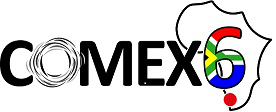Speaker
Description
Clustering phenomena are well known in nuclear physics. Nuclear reactions which involve the emission or capture of clusters of nucleons are particularly interesting to investigate the interplay between the nuclear structure and reaction dynamics [1]. Indeed, clusters in nuclear systems can be related to their dynamical formation or their structural presence (pre-formation) in nuclei. While for light nuclei several links between cluster emission and its connection with nuclear structure and dynamics have been pointed out [1,2], this is less obvious when moving towards heavier systems, where the determination of pre-formed clusters within nuclear matter is more complicated and there is still a lack of experimental evidences of such structure effects. An interesting way to investigate the structural properties of medium mass systems is to study, in central collisions, the competition between evaporation and fast emission, namely pre-equilibrium, of light particles and clusters as a function of entrance channel parameters [1].
As a first step of an experimental campaign, which is still ongoing at the Legnaro National Laboratories (Italy), the two systems 16O + 65Cu and 19F + 62Ni, leading to the same compound system 81Rb, have been studied at the same beam velocity (16 AMeV) using the GARFIELD + RCo multi-detector system [3]. The aim is to investigate how possible effects of clustering structures in the reaction partners could affect the reaction mechanism interplay. Angular distributions and light charged particles emission spectra in coincidence with evaporation residues have been measured up to very forward angles. Selected experimental data have been compared with the predictions of different statistical and dynamical models, filtered through a software replica of the experimental apparatus.
Recent results of the data analysis will be presented.
[1] P.E. Hodgson, E. Běták, Phys. Rep. 374 (2003) 1-89; T. Marchi et al . - Nuclear Particle Correlations And Cluster Physics – Chapter 20 –pag. 507 (2017) –ISBN 978-981-3209-34-3;
[2] W. von Oertzen et al. Phys. Rep. 432, 43-113 (2006) and ref. therein.
[3] M. Bruno et al. EPJA 49 (2013)12.

